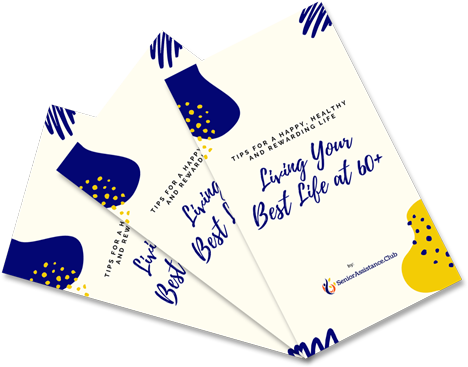Is "Senior" A Dirty Word?

Curious about the word “senior?” Many people are finding that the terms we use for aging connect us with negative perceptions about aging. It may seem invisible at first—but when you look closer, you’ll start to see the issues, as well as how to respond proactively.
Is Ageism Really A Problem?
We want to be citizens in a country and society that treats all people equally. We want to live in a just society that honors, respects, and includes everyone. We want to make sure everyone, of all ages, has meaningful ways to contribute.
Negative perceptions of older people is called ‘ageism.’ It is a real problem. My guess is, you may have experienced yourself. How does it show up?
It can be harder for older people to find jobs. If you’ve applied for a job, a gig, or a part-time position—you might have felt this in person. It’s not just uncomfortable. It’s not fair.
Research confirms that many older people are more qualified for jobs. This shows up especially in problem-solving experience, attention to detail, writing skills, and interpersonal communication skills. Yet, many seniors know that the issues of being senior can contribute to being let go from work—and not getting hired for new jobs.
This is even true when professionals not hired for roles to which they are highly qualified.
What Can We Do Differently?
We can begin to notice, discuss, and shift to a more positive outcome.
In the spirit of inquiry and communication, we can start a dialogue.
You might notice instances where people express negativity about getting old. This is often at a completely unconscious level. For instance, in the example about an employer—they may not even realize their own bias.
They may have made hiring decisions based on generalized beliefs or assumptions. By talking openly, we can shift the conversation. We can work to dissolve limiting beliefs. When we have an open dialogue, we confirm our own core values of justice.
Opportunity for Innovation
As wise seniors, we’re often focused on individual innovation. We look for ways to foster healthy habits in our life. Healthy food choices. Healthy exercise. Healthy sleep. Healthy habits. Healthy communication and connection with loved ones. It is natural to want to do everything possible to promote our individual health.
Yet, there are also opportunities to innovate at a broader level. If you look at your neighborhood, community, and city or beyond, you’ll discover more possibilities to improve the quality of life.
These opportunities are ways to enhance the structures that support good health for people of all ages. This maybe transportation, education, health care and employment policies.
It’s easy to see that even small improvements can have a massively positive impact.
For example, with a better transit system, you are more likely to visit a friend across town. You as well as other seniors are more likely to stay active, participate in civic activities, volunteer, and take part in physical exercise. Researchers found that eligibility to a free bus pass led to an 8% increase in the use of public transportation among older people. The study showed a 12% decline in depression symptoms among those taking the bus.
This insight is helping cities and states rethink public transportation options. A monthly pass for seniors, a discount for frequent travel, and a companion program can make it easier for people to stay active as they age.
Aging Is Dynamic
Aging is a dynamic process. As we grow older, we have more experience, skills, and wisdom. When we’re sharing these insights in our communities, everyone benefits.
We are seeing more and more people living longer and living with a higher quality of life. Everyone wants to enjoy positive aspects of aging. We want to stay active, engaged, and participating.
By shaping the places we live to encourage longevity and expanded productivity, we are building structures for the current and future generations. The constellation of solutions can help us build a community that promotes healthy aging.
This may include a wide variety of solutions such as:
- Community centers with intergenerational programs
- Yoga for seniors
- Intergenerational programs connecting seniors with children
- Parks with walkways for pedestrians
- Outdoor concerts
- Masters programs for boating, kayaking, skiing
- Better transit systems
- Patient advocates, community health clinics
- Job opportunities
In many communities, these programs already exist. Check your local listings to see what is already in place in your area.
Wisdom Is Fluid
Our society has a long tradition of innovation. We’ve built new social structures to respond to challenges. As the demographics change, we can call on our wisdom to find new solutions, new structures, and new systems.
More Americans are living longer, and living healthier. We are in a unique position. We can use social and technological inventiveness to support our changing needs.
Assistance Club Summary
The Big Idea: Ageism is Real. With a proactive communication approach, you respond creatively. Your efforts can generate productive solutions.
While ageism is often invisible, once you start learning the cues, you’ll notice it is quite visible. By talking about it, and being proactive – you can shift the conversation towards innovation.
